Nations of Canada
‘New France’ Stumbles Out of the Gate
In the tenth instalment of an ongoing Quillette series on the history of Canada, historian Greg Koabel describes the early—and tragically unsuccessful—French efforts to create a permanent colony

What follows is the tenth instalment of The Nations of Canada, a serialized project adapted from transcripts of Greg Koabel’s ongoing podcast of the same name, which began airing in 2020.
By the end of the sixteenth century, conditions for the European colonization of Canada had become ideal—as there was, by now, both a motive and an opportunity for the creation of permanent year-round settlements along the St. Lawrence River.
The motive was the increasing reach and sophistication of the Indigenous fur-trading networks that had been expanded during the fur boom of the 1580s (as discussed in the ninth instalment of this series). The land we now call Canada was no longer a byword for fool’s gold, as it had been in Jacques Cartier’s day (see instalment number eight). Here was a commodity of real value.
The European window of opportunity, meanwhile, arose from the Indigenous depopulation of much of the St. Lawrence River region during the latter sixteenth century, a process that most historians now believe was largely (and perhaps entirely) unrelated to the European newcomers. Generations of turmoil in the Indigenous geopolitical milieu, which had resulted from disruptions caused by the introduction of corn as a major agricultural crop, culminated in the dispersal of the Iroquoian-speaking villages that Cartier had encountered on his original voyages (most notably Hochelaga, the site of modern Montreal).

Ever since the Norse explorations almost 600 years earlier (instalment number two), Europeans had been hesitant to settle in locations where they’d be outnumbered by the local Indigenous population. But now, there was good land, strategically located on a major trade route, that seemed to be abandoned. Even better, some Indigenous groups were actually encouraging European settlement, in hopes of turning the newcomers’ presence to their advantage.
As we shall see, the first to respond to this opportunity were the French, who, by the beginning of the seventeenth century, would be in a position to become Canada’s first true colonizers. And it’s worth pausing our main narrative for a few paragraphs to discuss why. Why not England, or (more obviously) Spain?
Why not Spain or England?By the middle of the sixteenth century, the Spanish had made a conscious effort to develop the Basque whalers operating in the Strait of Belle Isle, which separates the Labrador Peninsula from Newfoundland, as a kind of naval reserve. This served the dual purposes of blocking any French repeat of Cartier’s voyages up the St. Lawrence, and supplementing Spain’s war-time naval power. It also opened the possibility of Spain further developing its presence in the region by establishing a permanent settlement on the St. Lawrence. But two factors worked against that outcome.
First of all, the Basques who’d set up shop on Île aux Basques—near the strategically located fur-trading centre of Tadoussac, which sits at the junction of the St. Lawrence and Saguenay Rivers—came from Saint-Jean-de-Luz, on the French side of the Pyrenees. (The fishing town is part of France to this day, sitting about a half day’s walk from the Spanish border.) Basques with links to the French may have been in a better position to exploit the fur trade than their Spanish-affiliated counterparts, as it would have been easier for them to move their pelts down the Seine toward the many buyers in Paris.
More importantly, though, by the 1580s, Spain’s attempt to develop the Basque whalers as a naval auxiliary had run its course. War with England broke out in 1585, and culminated in the disastrous (for the Spanish) Armada campaign three years later. From that point onward, Spanish naval resources were stretched thin. The priority was the flow of gold and silver from southern areas of the Americas, on which Spanish power depended. North Atlantic waters were largely conceded to the English. And any Spanish colonial enterprise in Canada would have been dangerously exposed to the Elizabethan raiders who plied the shores of Newfoundland.
Which invites the question: If not Spain, why not England?
Part of the answer is that English fishermen tended to work the Atlantic side of Newfoundland, almost a thousand kilometers east of Tadoussac, where the catch was more plentiful. As a result, English sailors were far less familiar with the Gulf of St. Lawrence.

It’s also helpful to examine the English experience with trans-Atlantic colonization up to this point in history. Martin Frobisher’s voyages into the Arctic in the 1570s had taken place amid a larger strategic debate within England about how to get in on the riches of empire that the Spanish were enjoying. Looming Hapsburg power made this an existential problem for Protestant England. The option pursued by Frobisher and his financial backer, Michael Lok, had been to find a quicker route to the Orient, bypassing the Spanish- and Portuguese-controlled routes around America and Africa. When this proved too difficult, the project shifted gears, and an attempt was made to extract (imaginary) gold from the Canadian Arctic—a story that ended in failure and scandal.

But England had a second option. Just as Frobisher’s grand adventure was coming to its dishonourable end, Francis Drake was setting out on his famous circumnavigation of the world. Rather than building a global English empire, Drake and his backers thought it would be more efficient to simply plunder the existing Spanish network.
The contrast between Frobisher’s costly failure and Drake’s highly profitable global piracy tour had a tremendous impact on English thinking. While England didn’t imagine itself as a perpetual pirate state, the emerging view was that the English future was in naval power rather than colony-building.
Moreover, even for Englishmen who dreamed of creating permanent colonies, there was plenty of more attractive real estate south of Canada—a lesson that would be reinforced by a disastrous English attempt to create a Newfoundland colony at a place called Cuper’s Cove in the early 1610s. The English concluded that the northern climate was too harsh to support year-round habitation. England’s adventurers looked to the mid-Atlantic shore, and Chesapeake Bay in particular.

So as neither the Spanish nor the English were in a position to establish a formal, state-regulated fur trade on the St. Lawrence coupled with permanently settled colonies, that left France as the obvious candidate.
French explorers had been further up the St. Lawrence than any other group of Europeans; they were better represented among the independent traders at Tadoussac; and, as noted above, Paris was a major market for feltable beaver.
There was one problem, though: the lengthy Wars of Religion that had first engulfed France in the middle of the sixteenth century. Thirty years later, when the St. Lawrence fur boom was at its height, those conflicts, which pitted Catholics against Protestant Huguenots, were still raging. France would need to restore order in its own house—something that wouldn’t happen before the end of the century—before it could build a colonial empire. As it turned out, the way France’s emerging leadership restored order would have important consequences for the Canadian story.
France’s Religious CrisisFor our purposes, the key theatre of action was France’s southwestern region, which encompassed several active players in the Canadian story: the Basques nestled in among the Pyrenees mountains, and the merchants of La Rochelle (who’d been involved in the Newfoundland fisheries for decades).
This quadrant of France also played a decisive role in the French Wars of Religion. Especially important in this regard were Bearn and Navarre, two quasi-states that sat in a Basque-speaking region between France and Spain. From 1479 onward, Bearn and Navarre had been jointly ruled by the same dynasty. The political situation was too complex to fully summarize here. But suffice it to say that the Kingdom of Navarre lay within the orbit of the Spanish Hapsburgs, while the county of Bearn fell under the vassalage of the King of France.
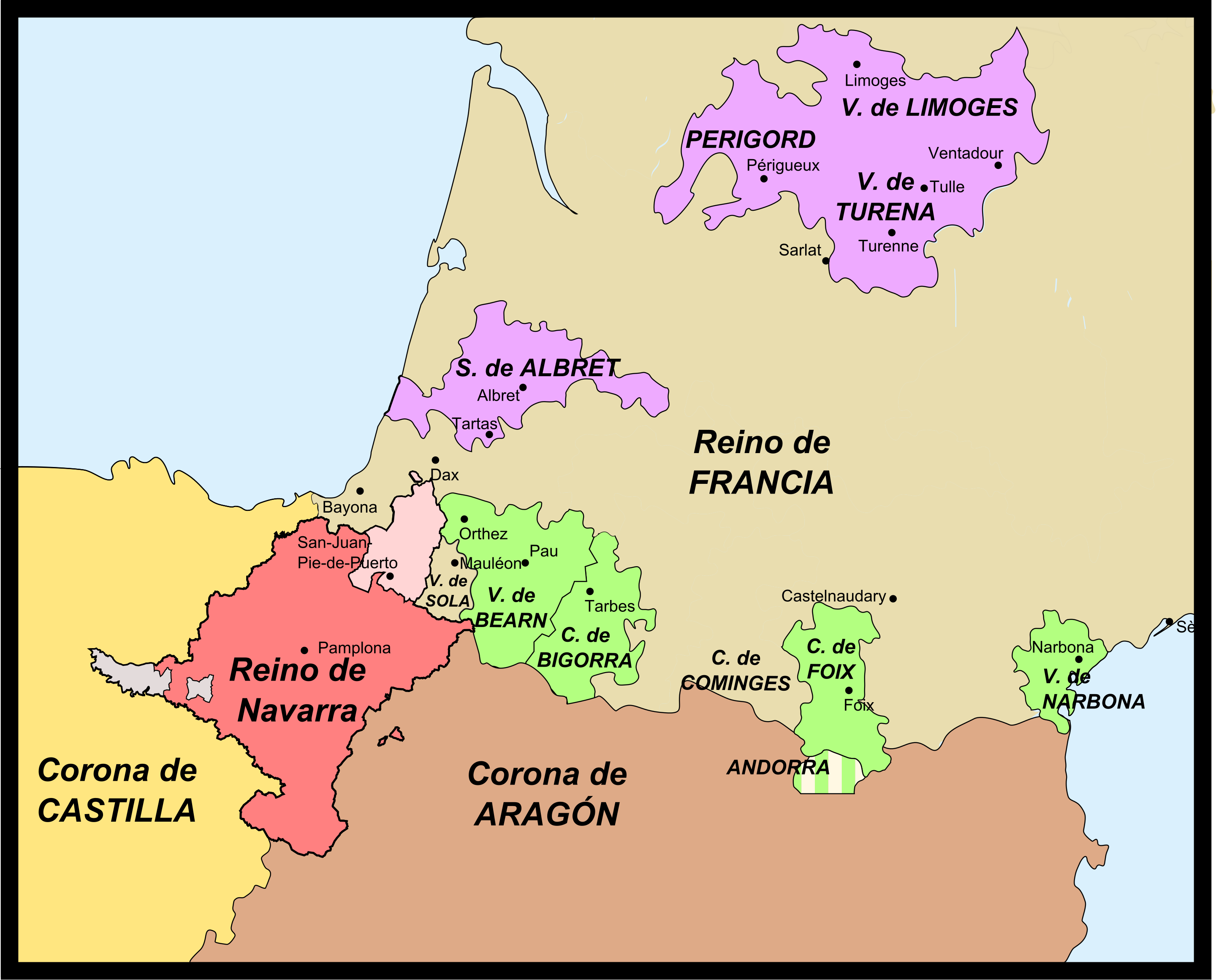
This situation was upended upon the outbreak of the French Wars of Religion by the Queen-Regent of Navarre and Countess of Bearn, Jeanne III (or, if you prefer, Jeanne d’Albret). Jeanne responded to the chaos by officially converting to Calvinism (a particularly radical form of Protestantism) and suppressing the Catholics under her rule. This aligned her with the various Huguenot factions fighting for control of France. Jeanne was also aligned (through her husband’s ancestry) to the Bourbons—one of the junior branches of the Capetian dynasty that had ruled France since the tenth century.
Jeanne of Navarre emerged as a major player in the French Civil Wars when a fresh round of fighting started in the late 1560s (a period sometimes referred to as the Second War of Religion). The leading Bourbon, Louis I, Prince of Condé, had been killed in battle. That left the Bourbons with two teenaged Henris: Condé’s 15-year-old son Henri, and Jeanne’s 16-year-old son of the same name.
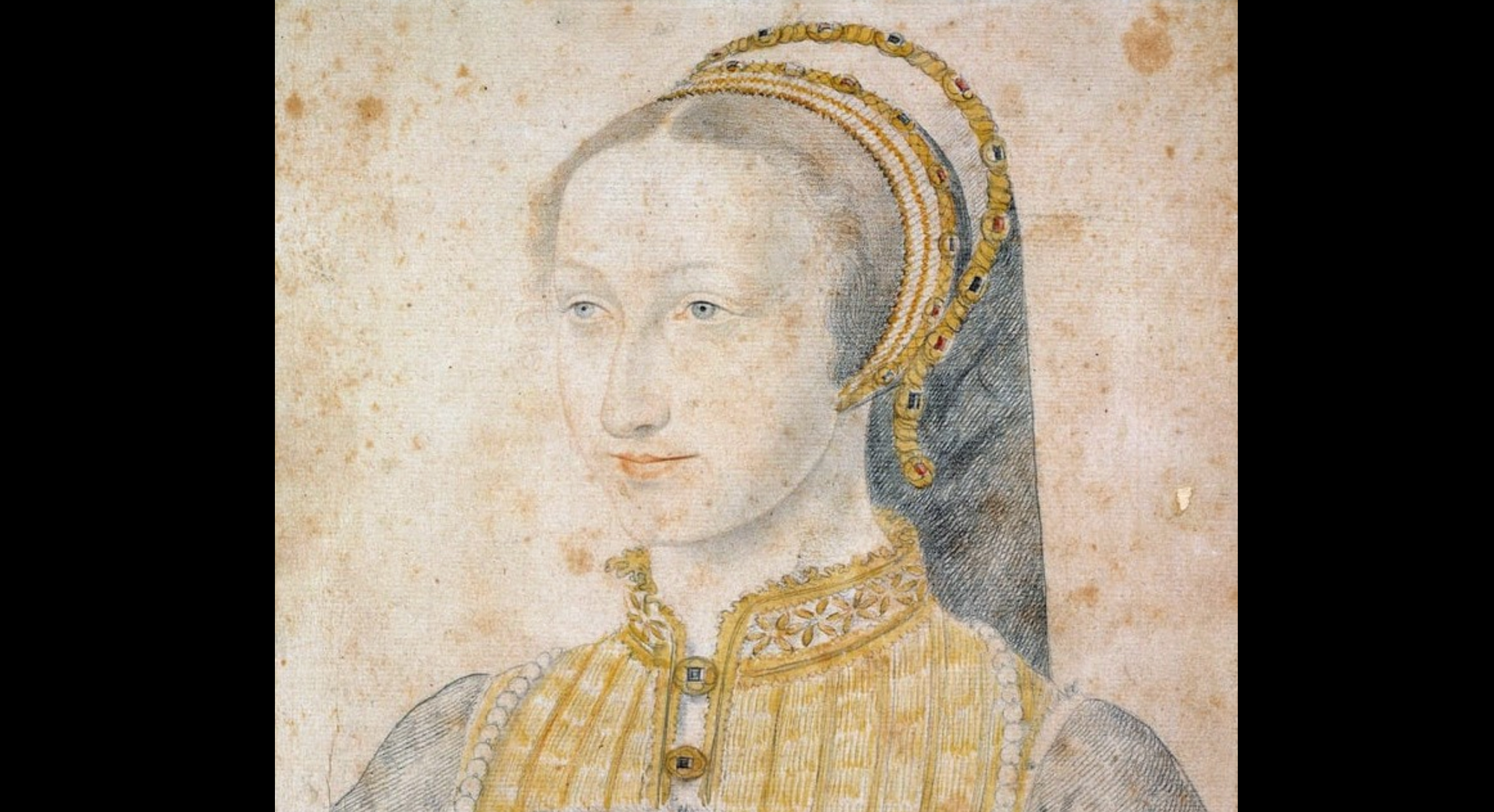
The story of how Jeanne’s son would eventually become Henri IV, King of France, in 1589, is long and complex—and involves countless plots, assassinations, and massacres. It also involves Henri converting to Catholicism at gunpoint following the St. Bartholomew’s Day massacre in Paris (an event I covered glancingly in the seventh instalment), then back to Protestantism once he’d escaped captivity, and then back to Catholicism (this time voluntarily) as a means to help heal France’s religious rifts. We don’t have time to cover these events in detail. But suffice it to say that Henri IV’s ascendancy to the throne helped finally end France’s Wars of Religion in the late sixteenth century, whereupon Spain was forced to recognize his royal legitimacy.
In 1598, Henri IV signed two documents that formalized the new state of affairs. The first was the Edict of Nantes, which laid out a new religious settlement between French Catholics and Protestants. The goal for Henri and his influential advisor, Maximilien de Béthune, Duke of Sully, was the creation of a stable and powerful central state. Officially, France would be a Catholic kingdom, but the Protestant Huguenot minority would be allowed to practice its faith, too. These rights were given practical force through political and military concessions to Huguenot regions, including urban centres such as La Rochelle. Protestant minority rights would be guaranteed not just by the word of the King; they would be protected by the Huguenots themselves, who were allowed to organize into quasi-autonomous states within the French state.
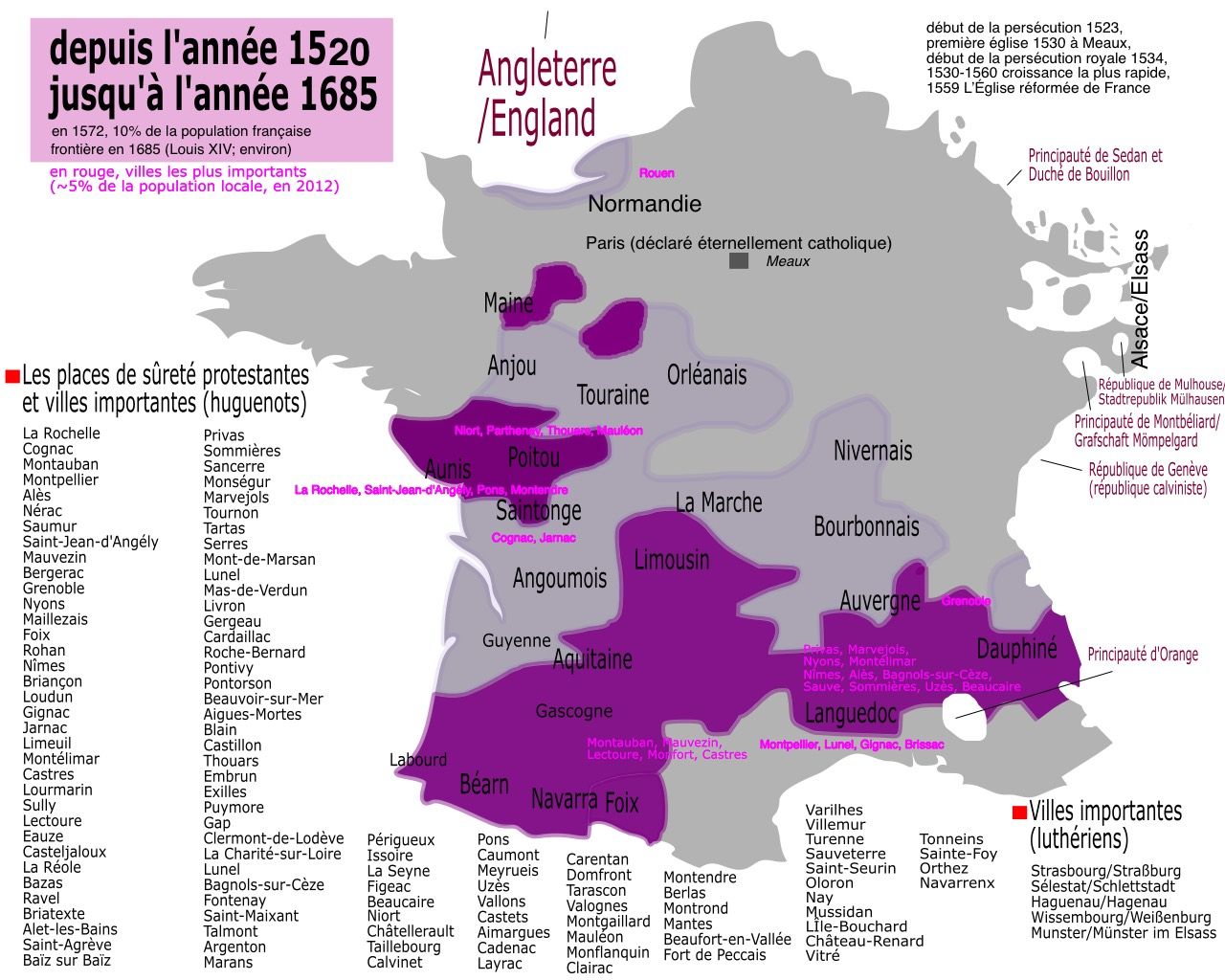
The second important document Henri IV signed was a peace with France’s old enemy, Spain. The mighty Spanish Empire, led until 1598 by Philip II, had committed itself to war on too many fronts. It could not continue involving itself in France’s civil wars, while at the same time defending vulnerable sea routes against English raids and battling implacable Dutch rebels. Forced to choose a priority, the Spanish concentrated on the Dutch, and did their best to mend fences with both France and England.
The Canadian connection to all of this—and I promised you there’d be one—came as a by-product of these European geopolitical adjustments. As part of the peace negotiations, Henri sought a relaxation of Spain’s claim of a monopoly on New World colonization. The old Pope-Alexander-VI-blessed Treaty of Tordesillas, which had divided the Americas between Spain and Portugal in 1494, was still official Spanish policy—which meant that, under its terms, Madrid would view any French settlement in Canada as illegal. Henri now received informal assurances from the Spanish that they would not dispute a French presence, as Spain was becoming more realistic about its global ambitions.
Like the English, Henri dreamed of finding an alternate route to the Orient, and encouraged expeditions to find a northeastern passage around Russia. These voyages failed to deliver results. But they did manage to plant a French presence at Spitsbergen, an island in the high Arctic, east of Greenland. Spitsbergen would soon become the new whaling capital of the world, as the old Newfoundland sites declined in importance due to climate change and (possibly) over-hunting.
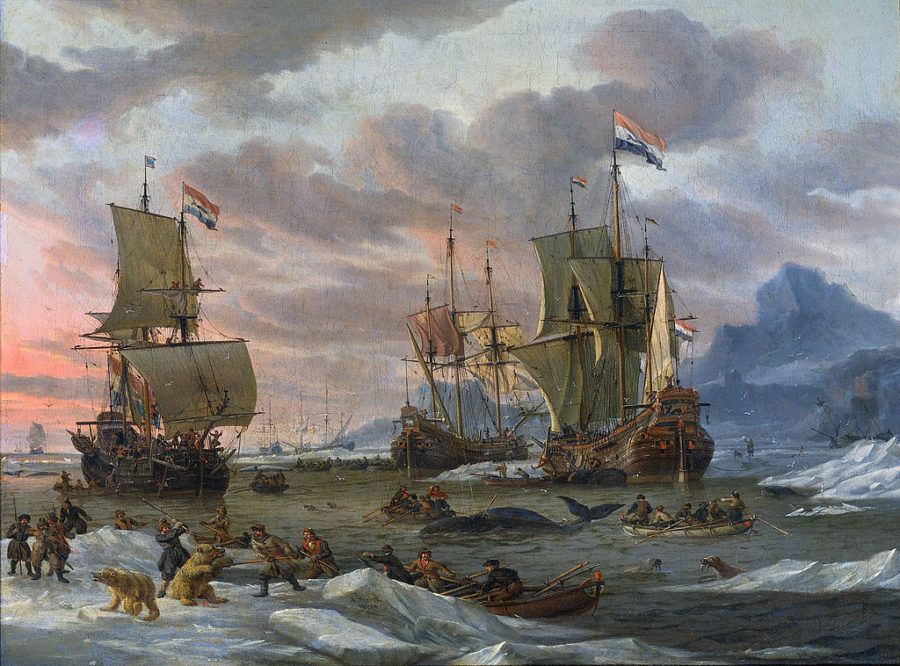
Henri also encouraged French traders to try the old Portuguese route around Africa. And one voyage even managed to get to Madagascar before running aground. Another got as far as modern day Sri Lanka before Dutch pirates intervened. Ultimately, the French failed to break into the Asian market, as the Portuguese were too well entrenched with local governments, and Dutch raiders made the East Indies too dangerous for any small-time European start-up.
Although Henri threw his moral support behind the intrepid Frenchmen leading these adventures, the French treasury was less forthcoming. The King’s chief advisor, the aforementioned Duke of Sully, saw a global French empire as a bottomless money pit. The example of Spain had been illuminating in this respect. Throughout much of the sixteenth century, the earth-spanning Spanish holdings had seemed to make Spain the most powerful empire in the world. But now, they’d become a source of vulnerability, as the life-blood of the empire was carried along sea routes that were vulnerable to Dutch and English attack. Would defending a French global empire cost more than it was worth?
Under Sully’s watchful eye, the royal treasury contributed little or nothing to the French voyages of exploration and commerce in the 1590s. France’s priorities were in Europe, so that’s where the kingdom’s resources would be directed. And so any would-be empire builders would have to get creative with their financing.
New France, 1.0And that is where our story returns to Canada in earnest—because there was now an opportunity on the St. Lawrence to build a colonial enterprise on a shoestring budget. There was a profitable fur trade already going on. And if the French Crown could succeed in regulating that trade, it could start generating tax revenue almost immediately. The cost of setting up a colony could be covered out of the proceeds.
Moreover, as already noted, the French were now discovering that the St. Lawrence valley had been depopulated. And so colonization need not be a matter of conquest (which would be costly). If the French played their cards right, they would not even need a large presence in the region: Such locals as remained in the area could be played off one another. Rather than paying European soldiers to protect French interests, Indigenous allies might do it for free.
In fact, the Innu at Tadoussac, and the Mik’maq in Nova Scotia were even urging the French to set up permanent settlements. Both groups hoped to strengthen their links to the Europeans.
The basic model that evolved was as follows. A group of French merchants and investors would pool their resources, and pay the Crown a regular fee. In exchange, Henri would grant them a monopoly in the Canadian fur trade. They would have the exclusive right to trade in the region and the legal authority to enforce the monopoly against any interlopers trying to trade on the sly. It was also possible for these investors to raise additional funds by allowing non-members to trade—for a fee.
The King expected the monopoly-holders to re-invest their profits in a permanent colonial settlement, as Henri wanted to extend France’s influence across the Atlantic. Colonization made sense for the investors, too, since a permanent military presence was the only way to enforce any monopoly against foreign rivals such as the English and Dutch.
In theory, it was a win-win proposition. In practice, however, there would be many hard lessons to learn when it came to setting up a permanent colony in Canada.
The first to try under Henri IV was a Breton nobleman, Troilus de Mesqouez, Marquis de La Roche-Helgomarche. La Roche (as we will call him) had been interested in Canada for quite some time. He had been the governor of Brittany since 1565, and during that time had become personally invested in the annual fishing fleets that went out to Newfoundland from the ports under his authority. In 1577, La Roche convinced the King (Henri III at that time) to name him viceroy of New France. At the time, the whole thing was theoretical, since “New France” did not yet exist. But La Roche was determined to make it a reality.
He met with fellow Breton investors and organized a small fleet to bring over the seeds of what La Roche hoped would become a permanent base in Canada. But the whole enterprise was snuffed out by the English. Suspecting La Roche of conniving with Irish rebels (a charge of which he was not entirely innocent), English ships attacked and seized the French fleet soon after it set out.
La Roche had trouble drumming up any interest in a repeat voyage. The investment had already been viewed as risky enough, even without throwing in the danger of English raids.
When the fur trade started booming a few years later, the mood shifted sufficiently for La Roche to try his luck again. The promise of fur drew an even larger contingent of investors—this time, from both St. Malo in Brittany, and from among the Basques in Saint-Jean-de-Luz. In 1584, a colonial fleet composed of over 300 men set out. But when a storm wrecked some of the ships before they’d even left the French coastal area, the others turned back.
A third attempt was delayed by the wars raging within France. La Roche, who supported Henri IV, ended up in an enemy prison for several years. And it was only in 1596, near the end of the conflict, that he was released. Looking to confirm his old position, La Roche pressed Henri IV for permission to once again try to establish a French colony in Canada. He had financial backers, so didn’t need money, just the royal imprimatur. Henri agreed to provide it.
The official papers were drawn up in early 1598, just a few days before Henri proclaimed the Edict of Nantes. La Roche was granted a monopoly on the fur trade and the authority to arrest any captains caught trading without permission. The King also granted La Roche the authority to scour France’s dungeons for recruits (the cheapest way to raise manpower for any such project).
In the spring of 1598, La Roche personally led 40 criminals and a handful of soldiers across the Atlantic. Their destination was Sable Island, a small isolated slip of land located about 200 km off the coast of Nova Scotia. As was the French habit, La Roche had picked a terrible place to set up a colony.

His primary motivation was probably familiarity. La Roche had sponsored a fishing voyage to Sable Island the previous year, and things had gone well. The 42-km-long island was out in the Atlantic, but it was on the edge of the Grand Banks fisheries, so it wasn’t too far removed from the economic action (when it came to fishing, at least). And La Roche may have been prioritizing security: The Mik’maq and other Indigenous populations didn’t really have the seafaring technology to pose a threat that far out from the mainland.
But whatever La Roche’s reasons, Sable Island proved to be entirely unsuited for colonial settlement. The island is a giant crescent of sand, with no trees and limited stocks of game (though wild cattle did roam the island, a legacy of Portuguese attempts to settle the place decades earlier). More importantly, the island was surrounded by sand bars, invisible from the surface of the ocean. Shipwrecks were a common occurrence.
Initially, La Roche ignored these problems, and dropped off his convict colonists with a few officials to supervise them. He himself spent the summer touring around the region, spreading news of his monopoly. Those trading in furs, he insisted, were to hand over one third of their profits, which would be applied to supporting the colony.
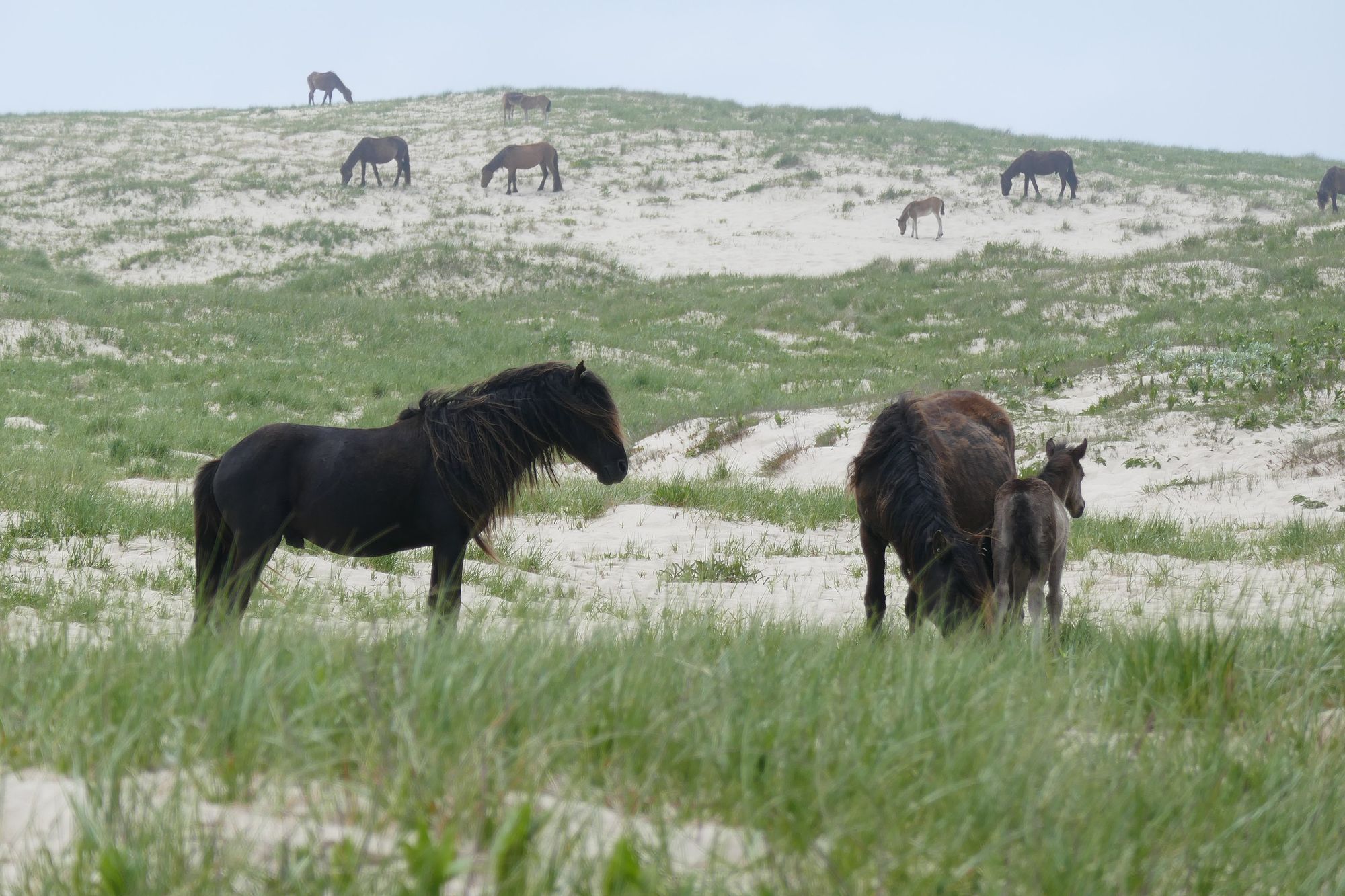
By the time La Roche returned to France in September, the operation was up and running—in theory, anyway. But a few problems were already apparent. First, the colony’s influence was insignificant: Sable Island was simply too far away from the mainland to exert oversight on the main fur-trading site at Tadoussac.
The second problem, which would become a consistent theme in the early days of New France, was that colonial authorities were being undermined back in France.
Almost as soon as the Sable Island colony had been established, some of the traders who were supposed to hand over a third of their profits started lobbying the Crown to limit La Roche’s authority. And this campaign received support in the highest corridors of power, where the Duke of Sully remained skeptical of the whole New France endeavour.
One influential dissident merchant was a Huguenot based out of Dieppe named Pierre de Chauvin—a soldier who’d fought for Henri IV in the wars of the 1590s while developing commercial interests across the Atlantic. Chauvin owned four ships, and did a brisk business in both fishing and fur trading. As Chauvin saw it, the flaw in La Roche’s colonial plan was obvious: The French needed to set up shop right in the middle of the action—at Tadoussac.
Together with influential allies (some of whom will get a proper introduction in a future instalment), Chauvin pitched the King a more ambitious model for France’s presence in Canada. They proposed to take a direct role in developing and controlling the centre of the fur trade, something La Roche’s piddling convict colony on Sable Island could never hope to achieve.
By the beginning of 1600, King Henri was convinced. Possibly, he was swayed by the fact that La Roche’s confident predictions of financial success had so far gone unfulfilled. During its first two years of existence, Sable Island had received several supply ships from France, but sent precious little back in the other direction.
Chauvin and his colleagues were granted a ten-year monopoly on the fur trade on the St. Lawrence. When La Roche complained that having two monopolies was a contradiction in terms, Henri clarified the situation. Chauvin was but one of his lieutenants in Canada, the King explained. It would not be the last time that mixed messages from home complicated the work of French colonial administrators.
In the spring of 1600, Chauvin arrived at Tadoussac and spent the summer trading furs and enforcing his monopoly. He also established friendly relations with the Innu, who saw the French as useful allies (and their presence in Tadoussac as an opportunity to form an exclusive Franco-Innu trading relationship). In the end, Chauvin’s first season was far more successful than La Roche’s, and he and his partners returned to France that fall with their ships full of cargo.
But if Tadoussac was the perfect place for a trading post, it was a poor site for an all-season settlement. Eleven of the sixteen men whom Chauvin had left behind for the winter paid for this mistake with their lives. The weather turned far colder than the French had envisioned. And the five survivors managed to get through the winter only by abandoning their settlement and seeking refuge among the neighbouring Innu.
Tadoussac sits at roughly the same line of latitude as the temperate southwest coast of France, a fact that had led many French explorers to expect a similar temperature profile (as noted in instalment number six). What the French of this period didn’t know is that western Europe is warmed by the Gulf Stream, and so enjoys warmer temperatures than lands sitting at equivalent latitude on the other side of the Atlantic.
Chauvin returned again for the trading seasons of 1601 and 1602, but he abandoned any thought of rebuilding a permanent settlement at Tadoussac. Indeed, the horror stories related by the survivors discouraged anyone from volunteering to spend the winter on the St. Lawrence. And without a permanent base from which to enforce his monopoly, there was little to separate Chauvin from all the other independent traders who came to Tadoussac every summer. After some initial promise, the dream of a French colony at Tadoussac faded away.

Meanwhile, La Roche had little opportunity to celebrate his rival’s failure. Sable Island was hardly more hospitable than Tadoussac. And by 1602, the situation there was made worse by a lack of supply runs from France. It was clear the project would not be turning profitable any time soon, and so La Roche had difficulty convincing investors to pay for annual shipments of food and supplies.
During the winter of 1602-1603, things got ugly—Lord of the Flies ugly: The men rose up and murdered the deputies La Roche had left in charge of the colony. They then turned on each other. And by the time a ship arrived to restore order in 1603, there were only 11 men left out of an original population of 60. These survivors were packed on board and the colony was abandoned. (Sable Island would not support a continuous human presence until the construction of maritime life-saving stations by the governor of Nova Scotia in the early nineteenth century.)
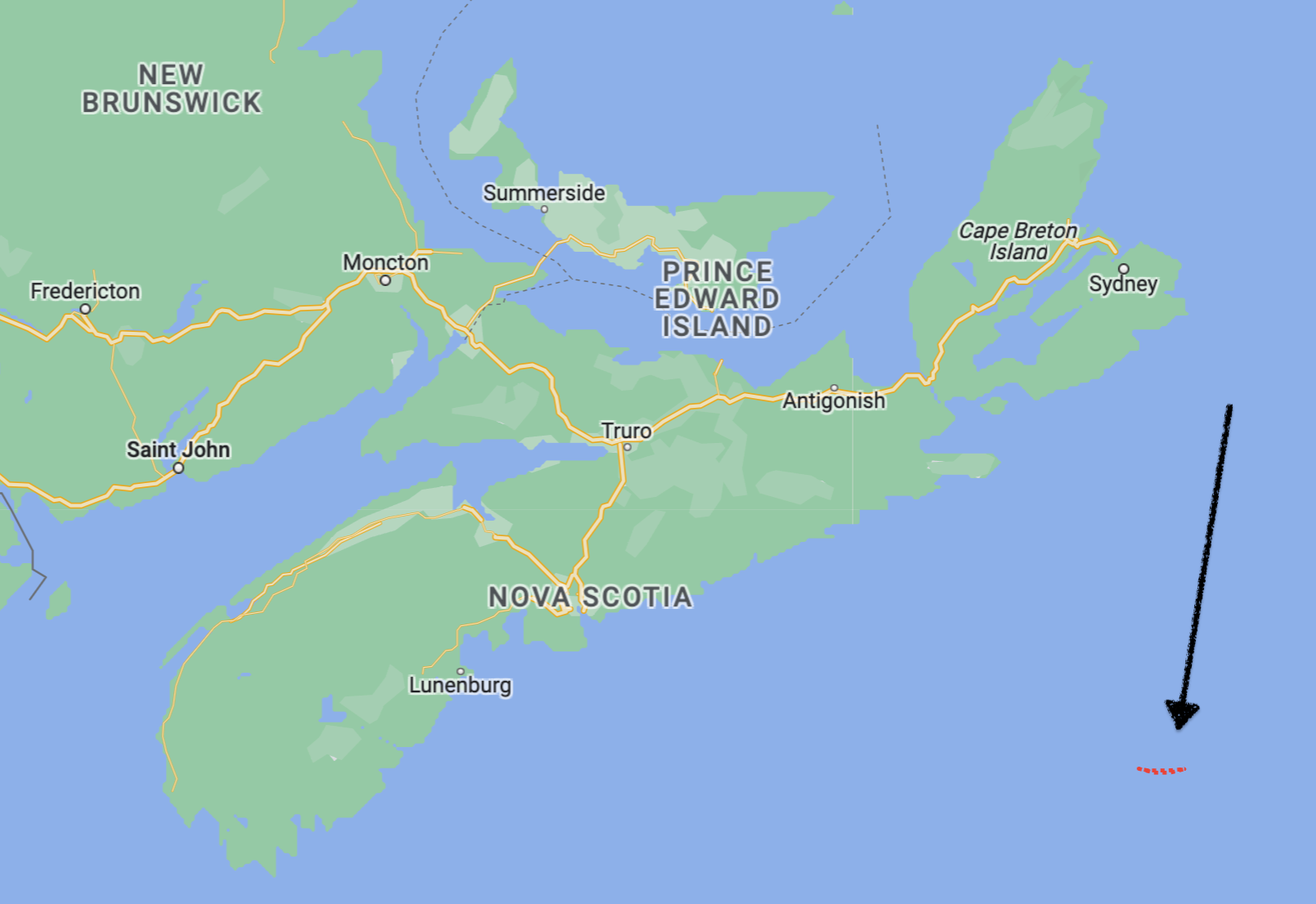
By the time the Sable Island rebels arrived back in France, it was clear that the French colonial project in Canada needed a serious overhaul if it was to continue. Yes, there was great economic potential in the fur trade. At any given time in the summer, there were as many as 50 European ships anchored off Tadoussac. The problem was establishing an official presence there that was capable of regulating and taxing that trade (not to mention excluding France’s rivals).
What France needed more than anything was a good defensible location where a base could be set up—somewhere closer to the trading activity than Sable Island, but not nearly so cold and exposed to the elements as Tadoussac. Unfortunately, despite the fact that Europeans had been present in the region for generations, knowledge of the land was limited: Fishermen and fur traders weren’t generally interested in scouting out good locations for year-round colonies, tasks that were irrelevant to their strictly seasonal priorities.
French colonial enthusiasts therefore decided to take a step back. They had been too hasty in rushing to settle the land before they even understood it. The next major voyage would have to be a mapping expedition, rather than a colonizing mission.
It is fitting then, that the driving force in this next phase of France’s Canadian project would not be a professional soldier or a powerful aristocrat, but rather a humble cartographer. In time, this man— Samuel de Champlain—would become known as the true founder of French Canada.






